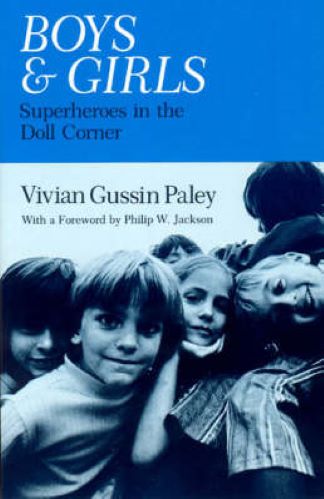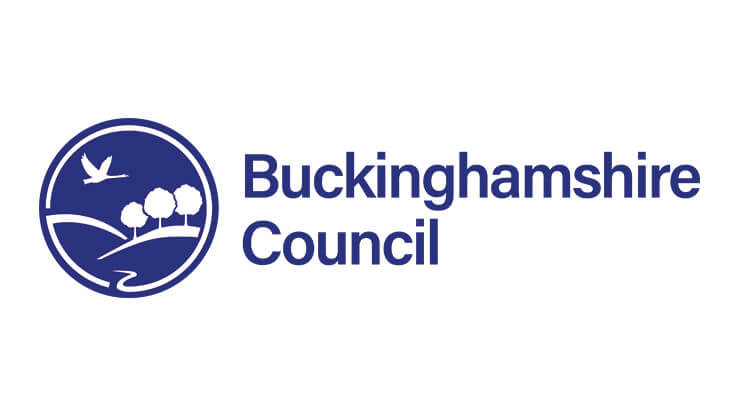
Boys and Girls: Superheroes in the Doll Corner
by Isla Hill
Review by Will Clark
Isla Hill is Education Director at MakeBelieve Arts. She fell in love with Vivian Gussin Paley’s approach whilst studying toward her MA and has been delivering training in Helicopter Stories ever since.
Book No: 3 – 1st published: 1984
If I have not yet learned to love Darth Vader, I have at least made some useful discoveries while watching him at play. As I interrupt less, it becomes clear that boys play is serious drama not morbid mischief. Its rhythms and images are often discordant to me, but I must try to make sense of a style that, after all, belongs to half the population of the classroom.
When I read Boys and Girls: Superheroes in the Doll Corner for the first time I realised that I could have been one of the children in Vivian’s classroom. The book was published in 1984, the year I was five. One of these children could have been me.
Looking through my notes on this book, there was one overriding theme that I am reminded of throughout all of Vivian’s practice; it is one of truth. Vivian never shied away from the truth and from sharing these truths with the children she worked with. In the foreword to this publication, Philip Jackson comments, ‘Vivian Paley is courageous.’ Throughout her teaching career she had the courage to examine her teaching, and the way life carried on in her classroom, and continually reflect on how it could be better.
During the year this book was written, Vivian observed that Franklin, one of the boys in her class, struggled to share the building blocks with other children, or allow them to help him build a house. She decided to act out his behaviour, playing the part of Franklin and asking the class to guess who she was pretending to be. She invited two boys to act with her, as if they are building with the blocks. Vivian shouted at the boys, ‘No, not that way! Give it here! Do it this way!‘ The class, including Franklin, instantly recognised the character Vivian was acting as their classmate.
This was a clever way of helping Franklin to understand his behaviour and the effects this had on the others in his class. However, I know as a practitioner myself, that I would have struggled to have been this brave. I would have worried that I might upset the child in question. Vivian has a deeper insight.
Children can become objective only when events are seen as make-believe.
Franklin was open to this insight into his behaviour as it was set within a story. Through the vehicle of this story, Vivian enabled Franklin to pretend to be boy who knew how to share in the blocks.
Boys and Girls is full of instances of honesty, insight and truth. The running track which Vivian creates around the outside edge of her classroom, to solve the problem of the boys needing to run all the time, ends up with a tearful Teddy unable to stop running around the track as he is compelled to follow the arrows. He exclaims ‘Jonathon is Dracula. He’s chasing me.‘
Vivian also tries running separate boys and girls gym lessons as she wonders whether the girls feel intimidated by the boys competitive edge. However, being apart leads the boys to be more exuberant and the girls to become sedentary and sedate. Many of these ideas fail but this does not matter. Vivian’s interest is not about success or failure but it is focused on what she has learnt about the children and how this effects the provision she is able to offer them.
In all the years I have been listening to children’s stories I assumed that boys often rejected female roles because they didn’t like playing them or that they didn’t want to be seen to be playing a girl in front of the other boys for fear of rejection. It seems Vivian made the same assumption at first. However, Vivian’s insight during the book suggests that these decisions are also based on whether the role fits the narrative of the boys’ fantasies or not.
So how much has changed for children in schools in 35 years?
How much have children changed in that time is probably a more pertinent question. The answer it would seem, is very little. Apart from a few tell-tale signs of the 80’s, via the characters children told their stories about from the popular culture of the day, this book could have been written today. Not because education hasn’t progressed, but because the fundamental characteristics of children remains the same. Vivian’s insights and questions into the needs of the two genders are just as relevant now as they were then.
One question Vivian posed all those years ago, remains as important today. Have we improved our classroom offer based on gender? Is education still more accessible to girls than to boys?











